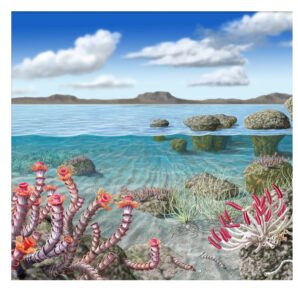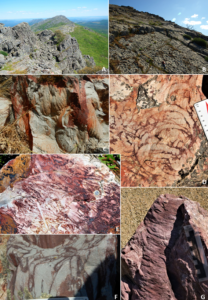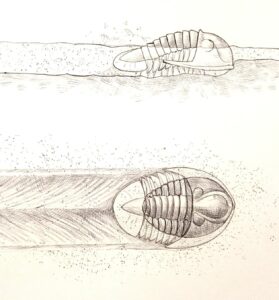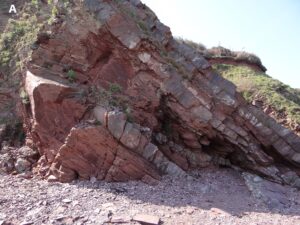Across the Ediacaran to Cambrian transition, some 541 Ma, the Earth’s biosphere changed from one dominated by microbial organisms to one where multicellular organisms, including animals, rose to importance. Within a few tens of millions of years into the Cambrian Period an array of animal groups appeared, some extinct and others ancestral to modern groups, […]

The Early Paleozoic oceans were generally characterized by short trophic chains and simple ecological tiering dominated by suspension-feeding organisms. However, the Great Ordovician Biodiversification Event (GOBE) was responsible for the complexification of food webs, increasing depth and diversity of substrate ecospace utilization and increasing benthic competition for resources near the water-substrate interface. Daedalus is an […]

Cruziana is a common and widespread trace fossil in Lower Palaeozoic strata that is generally attributed to the activity of trilobites. The Lower to Middle Ordovician Armorican Quartzite Formation of southern Europe contains well-preserved examples of the Cruziana rugosa Group. This paper outlines how Cruziana forms an important part of the geological heritage in the […]

The Permian breccias, conglomerates and sandstones of the English Riviera UNESCO Global geopark were deposited in quite harsh, desert environments just north of the Permian Equator. Body fossil evidence is completely lacking but rare trace fossils provide evidence of a land-based community. There is a variety of traces present, probably indicative of the presence of […]
